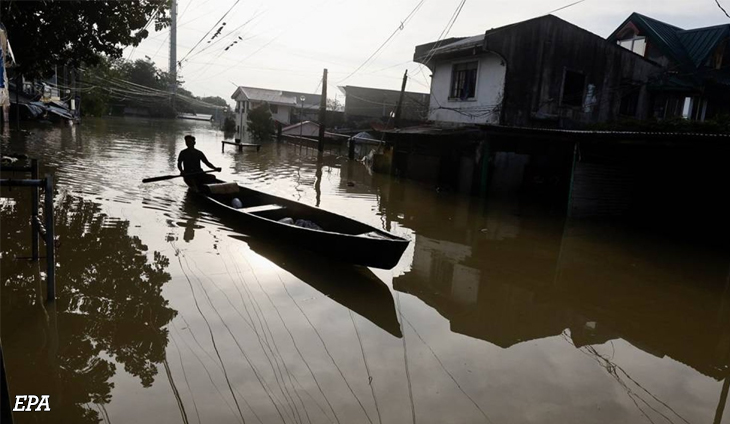A recent study by the Boston University Global Development Center has proposed that the International Monetary Fund (IMF) sell a portion of its extensive gold reserves to provide urgently needed debt relief for low-income countries facing climate-induced disasters.
This suggestion, coming as global leaders meet at the COP29 climate summit, aims to address the deepening debt crisis that has impacted vulnerable economies from the Caribbean to sub-Saharan Africa.
Many of these nations have repeatedly turned to the IMF for assistance during recent shocks such as the COVID-19 pandemic, which have escalated their financial obligations to the IMF in subsequent years.
Despite its existing Catastrophe Containment and Relief Trust (CCRT), the IMF’s capacity to assist remains limited. Established to support countries dealing with sudden economic shocks, the CCRT currently has only $103 million in available funds and is restricted to 30 of the poorest countries.
Under its terms, the CCRT can cover loan repayments for eligible nations for up to two years, helping them redirect funds to address other critical needs.

However, researchers from Boston University pointed out that the trust’s limited funds and strict eligibility criteria exclude many climate-vulnerable countries, as they are not formally recognized by the IMF as eligible based on climate vulnerability.
To expand the reach of the CCRT, the researchers advocate selling 4% of the IMF’s 90.5 million ounces of gold reserves. Given that gold prices are presently around $2,600 per ounce, a sale of this fraction could generate approximately $9.52 billion.
READ ALSO: South African FA President Danny Jordaan Arrested
This additional funding would cover debt relief for as many as 86 countries, allowing these nations to redirect resources toward recovery and resilience measures. “With current gold prices exceeding $2,600 per ounce, selling a small fraction of gold has the potential to generate significant revenues and easily replenish the CCRT,” the study highlighted.
This approach to debt relief would not only alleviate immediate repayment burdens but could also serve as a model for sustainable financing tailored to climate resilience. While IMF gold reserve sales are infrequent, with the last instance in 2009-2010, Boston University researchers argue that current economic pressures make such a sale timely and impactful.
The IMF has a historical precedent of selling gold for financial support, as seen in 2009 when it sold an eighth of its reserves to boost lending capacities during the global financial crisis, Reuters.
The IMF’s gold holdings, accumulated at an original cost of $45 per ounce due to member state contributions when the organization was founded in 1944, have appreciated in value substantially.
Today, gold prices stand at more than $2,600 per ounce. Leveraging this increase in value, according to researchers, could provide a powerful boost to the CCRT without adversely affecting the IMF’s financial stability.

The report also draws attention to the rising repayment obligations of climate-vulnerable nations. For instance, Madagascar, an Indian Ocean island nation, will be paying $106 million to the IMF in the coming year, representing a quarter of its total debt service obligations, and this amount is expected to climb to $158 million, or 41% of its debt servicing costs, by 2026.
Similarly, Mozambique is projected to face increased IMF repayments over the same period, underscoring the financial burden faced by many low-income countries already struggling with climate challenges.
READ ALSO: U.S. Launches Missile Defense Base in Poland Amid NATO Uncertainty in Trump Era
To realize this proposal, the IMF would need a majority vote from its executive board members. Additionally, IMF member states would need to commit to allocating their share of the proceeds to the CCRT to ensure it achieves its full potential.
In conclusion, the report urges IMF decision-makers to view replenishing the CCRT as a top priority, emphasizing that the CCRT’s funding model stands apart from other IMF loan programs because it is free of policy conditions for recipients.
Such an approach aligns with a growing recognition of the need for dedicated climate financing mechanisms that address the unique challenges faced by climate-vulnerable, low-income nations.
As world leaders discuss climate action at COP29, this innovative approach to IMF support offers a meaningful path toward debt relief and climate resilience for the countries that need it most.

